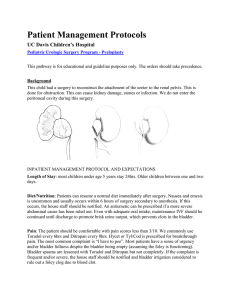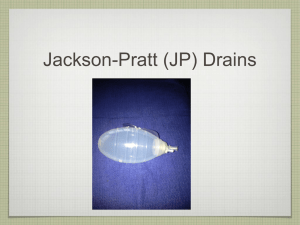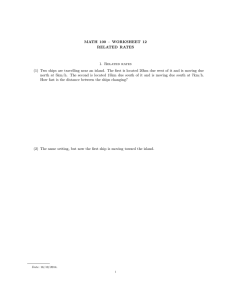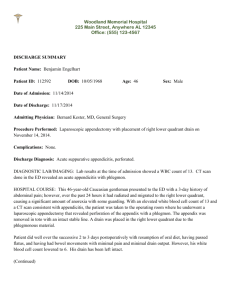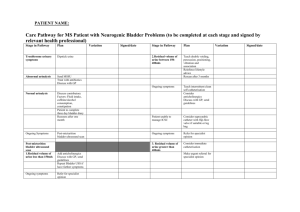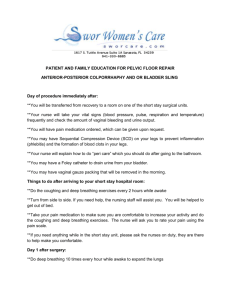Patient Management Protocols UC Davis Children’s Hospital
advertisement
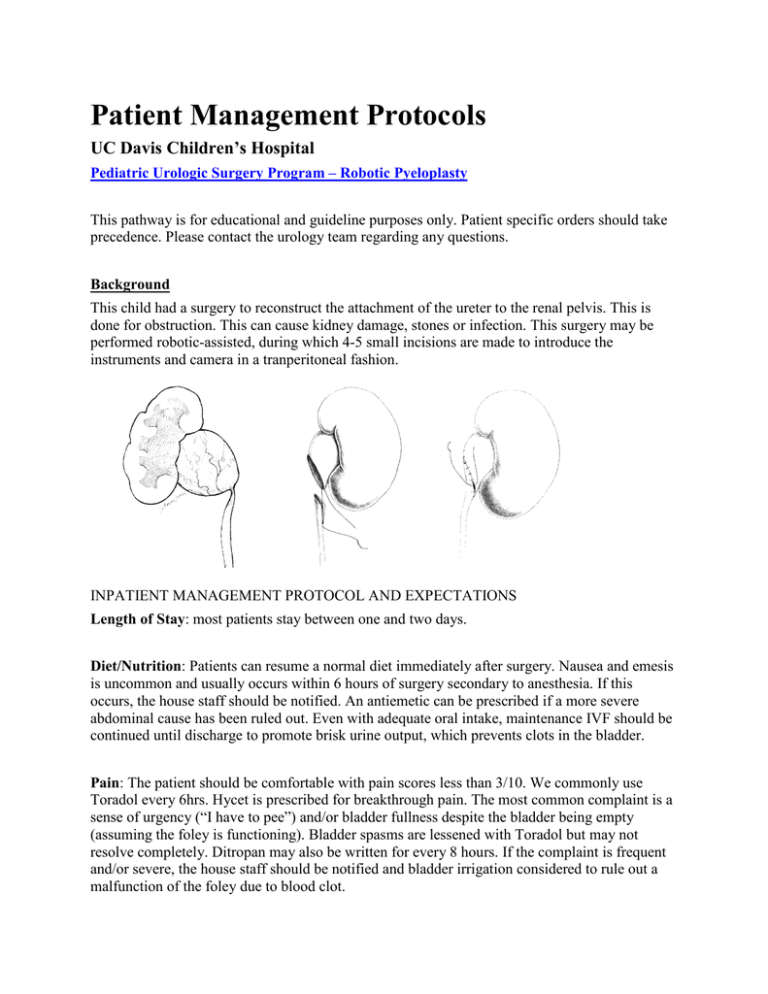
Patient Management Protocols UC Davis Children’s Hospital Pediatric Urologic Surgery Program – Robotic Pyeloplasty This pathway is for educational and guideline purposes only. Patient specific orders should take precedence. Please contact the urology team regarding any questions. Background This child had a surgery to reconstruct the attachment of the ureter to the renal pelvis. This is done for obstruction. This can cause kidney damage, stones or infection. This surgery may be performed robotic-assisted, during which 4-5 small incisions are made to introduce the instruments and camera in a tranperitoneal fashion. INPATIENT MANAGEMENT PROTOCOL AND EXPECTATIONS Length of Stay: most patients stay between one and two days. Diet/Nutrition: Patients can resume a normal diet immediately after surgery. Nausea and emesis is uncommon and usually occurs within 6 hours of surgery secondary to anesthesia. If this occurs, the house staff should be notified. An antiemetic can be prescribed if a more severe abdominal cause has been ruled out. Even with adequate oral intake, maintenance IVF should be continued until discharge to promote brisk urine output, which prevents clots in the bladder. Pain: The patient should be comfortable with pain scores less than 3/10. We commonly use Toradol every 6hrs. Hycet is prescribed for breakthrough pain. The most common complaint is a sense of urgency (“I have to pee”) and/or bladder fullness despite the bladder being empty (assuming the foley is functioning). Bladder spasms are lessened with Toradol but may not resolve completely. Ditropan may also be written for every 8 hours. If the complaint is frequent and/or severe, the house staff should be notified and bladder irrigation considered to rule out a malfunction of the foley due to blood clot. Foley: The catheter should be secured to the patient’s leg with tape. This should be checked each time the bag is emptied. We expect the urine to be clear or pink. If the urine is deep red or the clots are large, the house staff should be notified. JP drain: this drain is adjacent to the kidney to allow any leakage of urine to get out of the intraperitoneal space. The output is usually yellow or pink. We usually remove this drain prior to discharge. Activity: Most patients prefer to stay in bed or only up to chair until POD#1 and after the foley is removed. DISCHARGE CRITERIA: Tolerating liquids No fever Pain scale less than or equal to 3/10 DISCHARGE INSTRUCTIONS: Diet: Regular Activity: advance as tolerated, no strenuous activity or PE for 4 weeks Wound care: if JP drain present, then dressing changes prn wetness. Bathing: if JP drain is present, then sponge bath only until drain is removed Medications: Hycet, Tylenol or Ibuprofen prn Follow up: Pediatric Urology for drain removal (if present) or O.R. date for internal stent removal
